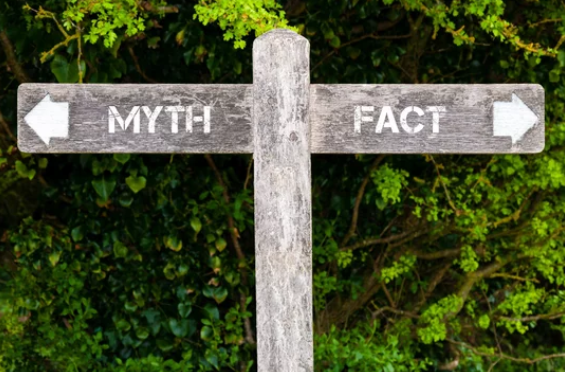Recycling Myths: Separating Fact From Fiction

At TRC, we spend a lot of time promoting our cause—the safe recycling of mercury-containing thermostats—and implicitly suggesting a personal commitment to environmental stewardship. In a sense, most of us, I presume, make some efforts at personal recycling. But a few decades ago, did anyone see those recycling arrows on a plastic container sharing the curb with its cousin the garbage can?
My intent for this blog is never to be preachy. But we all have enough common sense to know that waste and how we deal with it is vital because, after all, we’re all consumers, regardless of gender, race or political persuasion. And just knowing a bit more about the correct approach to recycling, you will make the world a tad cleaner and safer for everyone.
And the starting point is to understand the facts behind the myths that sometimes propagate the recycling landscape. A few of these myths that continue to pop-up in the recycling orbit include:
Myth #1: You can always recycle cardboard and paper products.
Reality: You cannot recycle food-soiled paper and cardboard products. That means don’t fold that pizza box and then dump it into your recycling container. Consider composting those pizza boxes and other food leftovers. To find a composting site, visit https://facilities.uw.edu/services/recycling/disposal-guide/compost
Myth #2: Your water bottles are recycled into a new water cycle, right?
Reality: Wrong. Most recycled plastic ends up in carpets or fleece. Plastics are recyclable only once. Your best step is to use a reusable bottle for all beverages.
Myth #3: You can throw your plastic bags into the recycling bin.
Reality: Don’t. While plastics bags are generally recyclable, refrain from tossing them into the curbside bin. “We have all these moving gears and wheels in our facility, and when you put in a plastic bag, it does a great job of jamming that machinery up,” according to Kylie Byrd, with the Center for Hard to Recycle Materials. “We have to shut everything down and send someone in there to try to cut out all the plastic bags. It’s a huge waste of time and energy—not to mention kind of a safety hazard.”
Try to drop off those pesky plastic bags where they have a home waiting for them. Consider, Target, Walmart or your local grocery store. Try this directory using your ZIP code: https://www.plasticfilmrecycling.org/recycling-bags-and-wraps/find-drop-off-location/
Myth 4: Those ever-present recycling arrows (Mobius) on containers implies that it will be recycled at a Material Recovery Facility (MRF).
Reality: Sometimes. The Federal Trade Commission requires that a product have at least 60% access to programs like an MRF to get the coveted recycling arrows. Don’t count on the Mobius as being necessarily acceptable for mixed curbside recycling. Remember that products and packaging all have their unique chemical composition. The best approach is to recycle by shape: bottles, jars, jugs and tubs.
Myth 4: It’s OK to throw electronics into the recycling bin.
Reality: Generally, you can’t, and it is usually a bad idea. The reason is that lithium-ion batteries that we have in smartphones, for example, can explode and result in a fire.
You can recycle electronics, but you must take them to a special facility known as an “e-waste” facility. Most e-waste includes computers, tablets and smartphones.
You can also send your electronic throwaways to Goodwill. “To make it even more convenient for consumers to recycle their unwanted computer equipment, Goodwill Industries International and Dell® have added 445 more ReConnect donation sites to their collection network,” according to Goodwill Industries.
Myth #5 The only way to reduce trash is to recycle.
Reality: Don’t forget reducing and reusing. The less trash we generate, the less we have to recycle or throw away. Don’t buy more than you need, reuse things you already have, and donate what you don’t need.
Now that we’ve unmasked the myths, it’s up to you to become the best recycler you can be.

